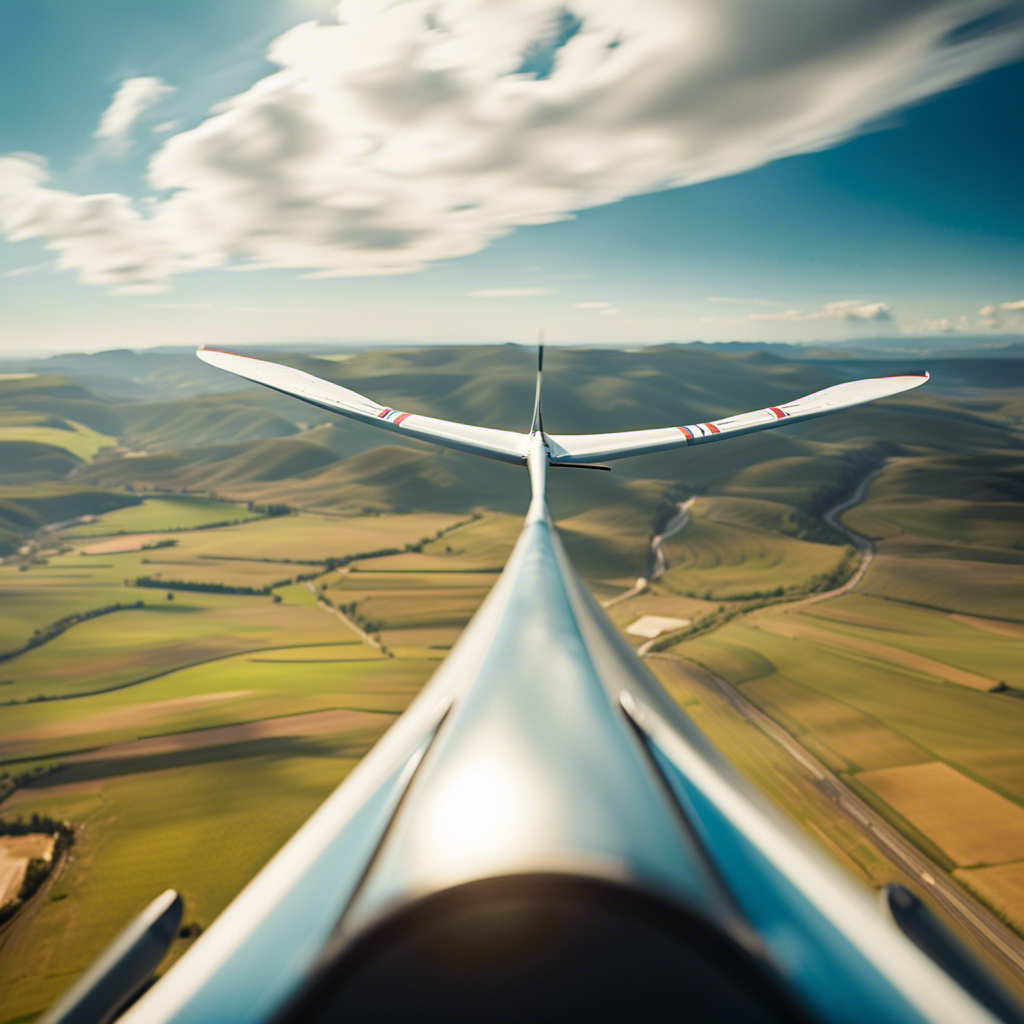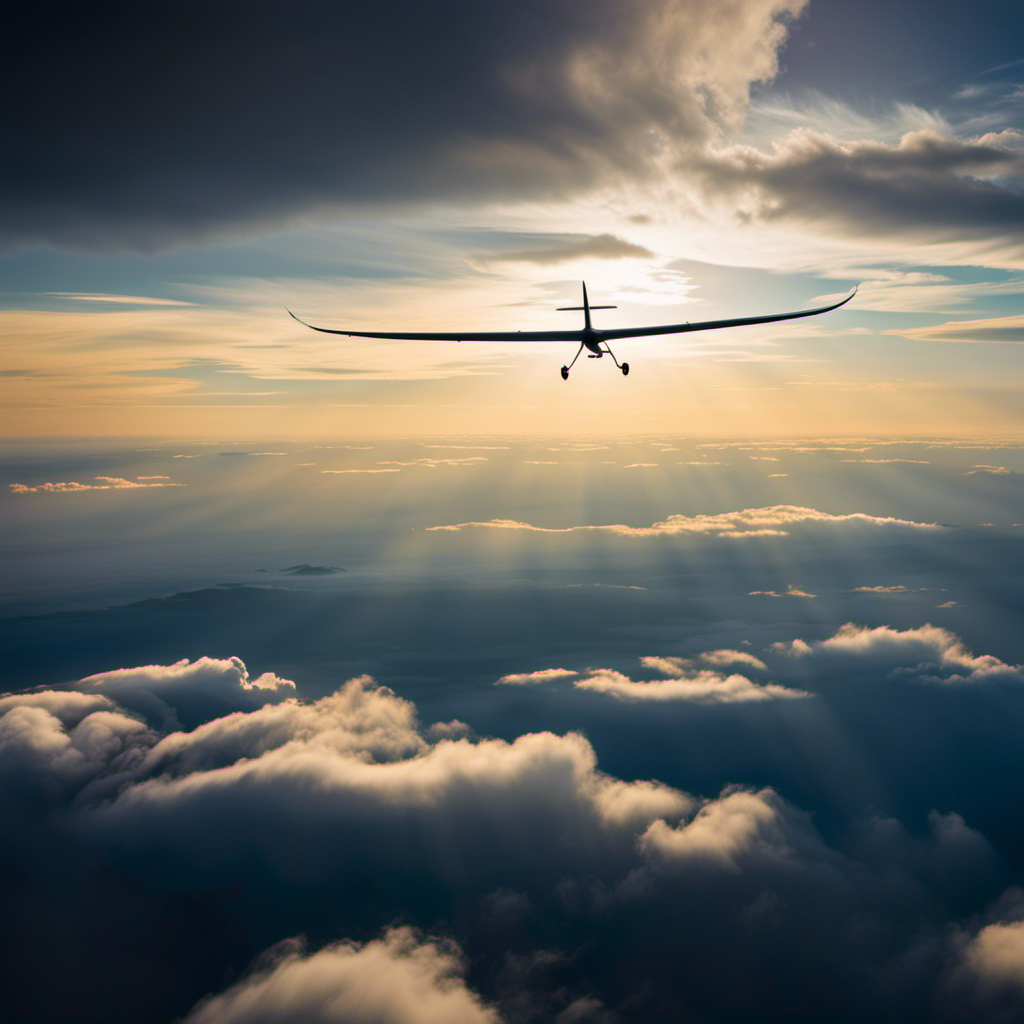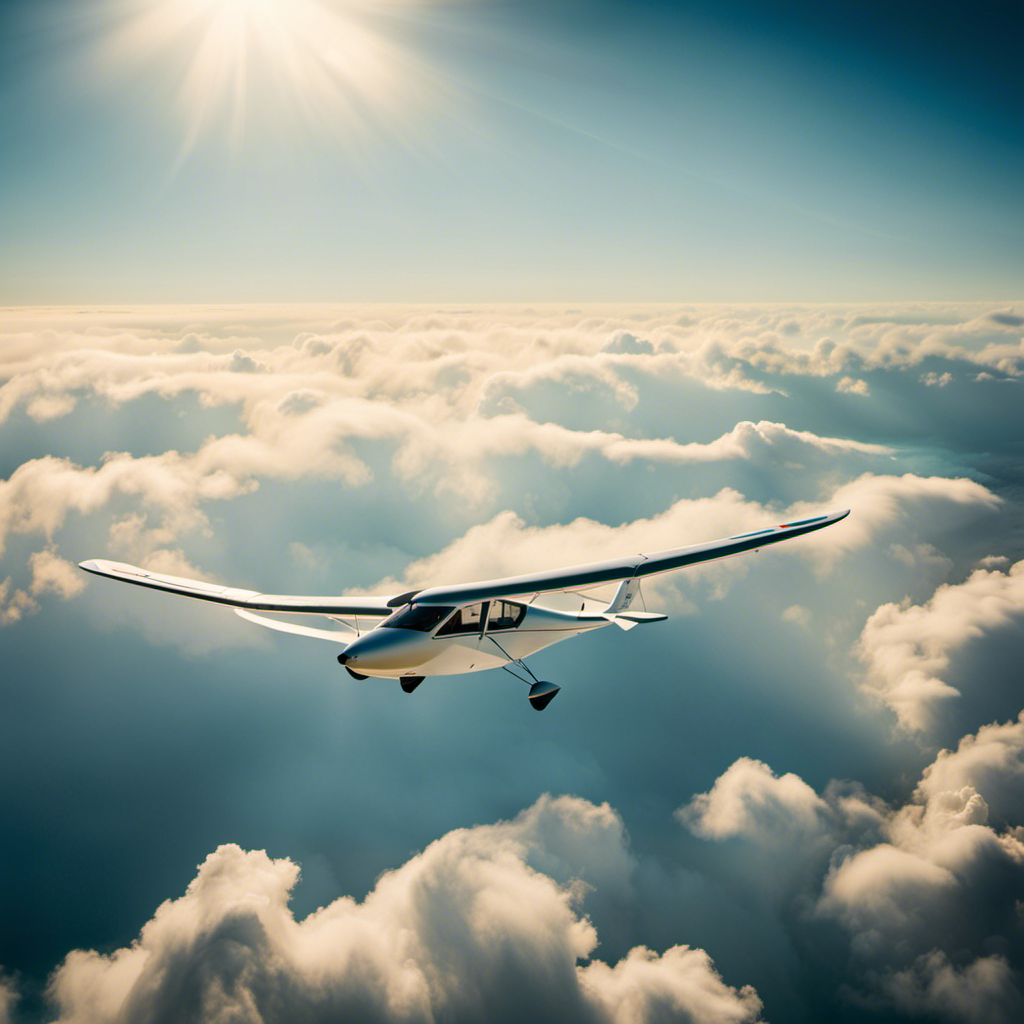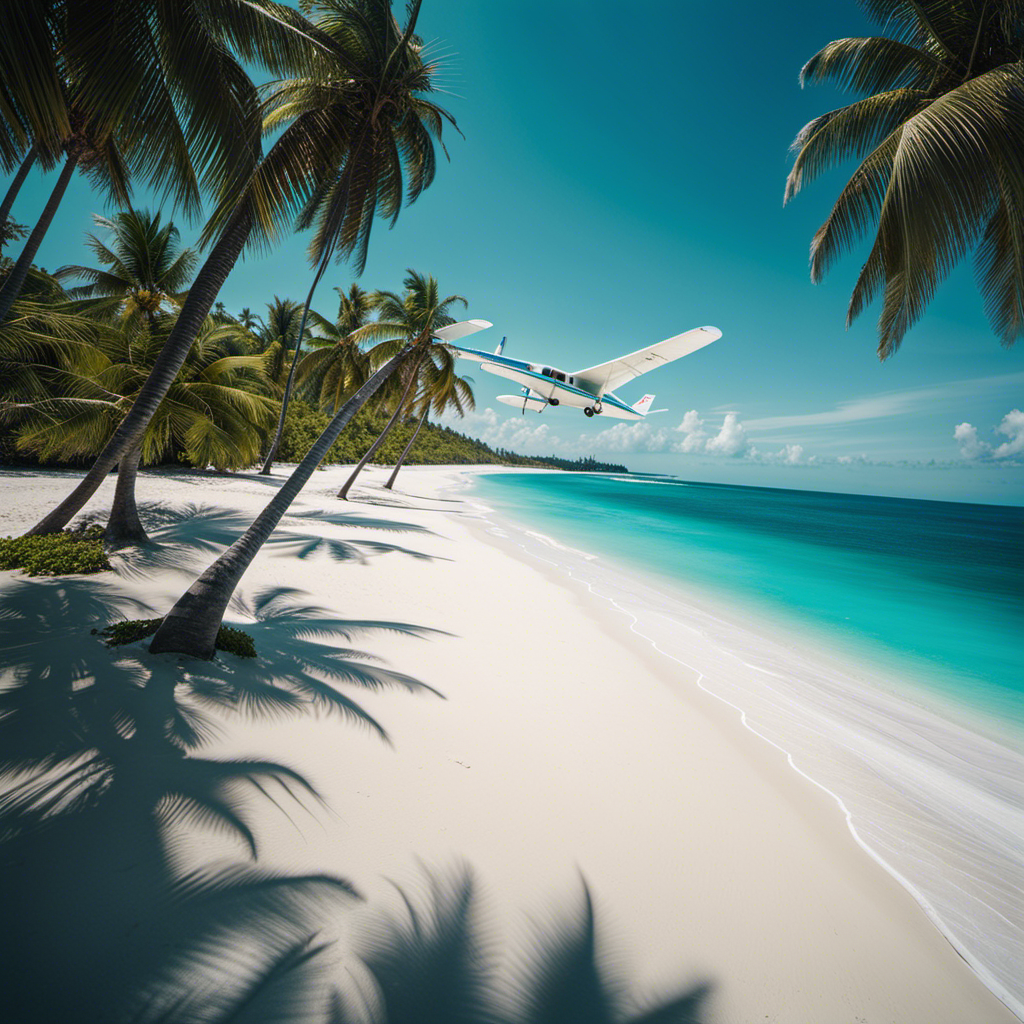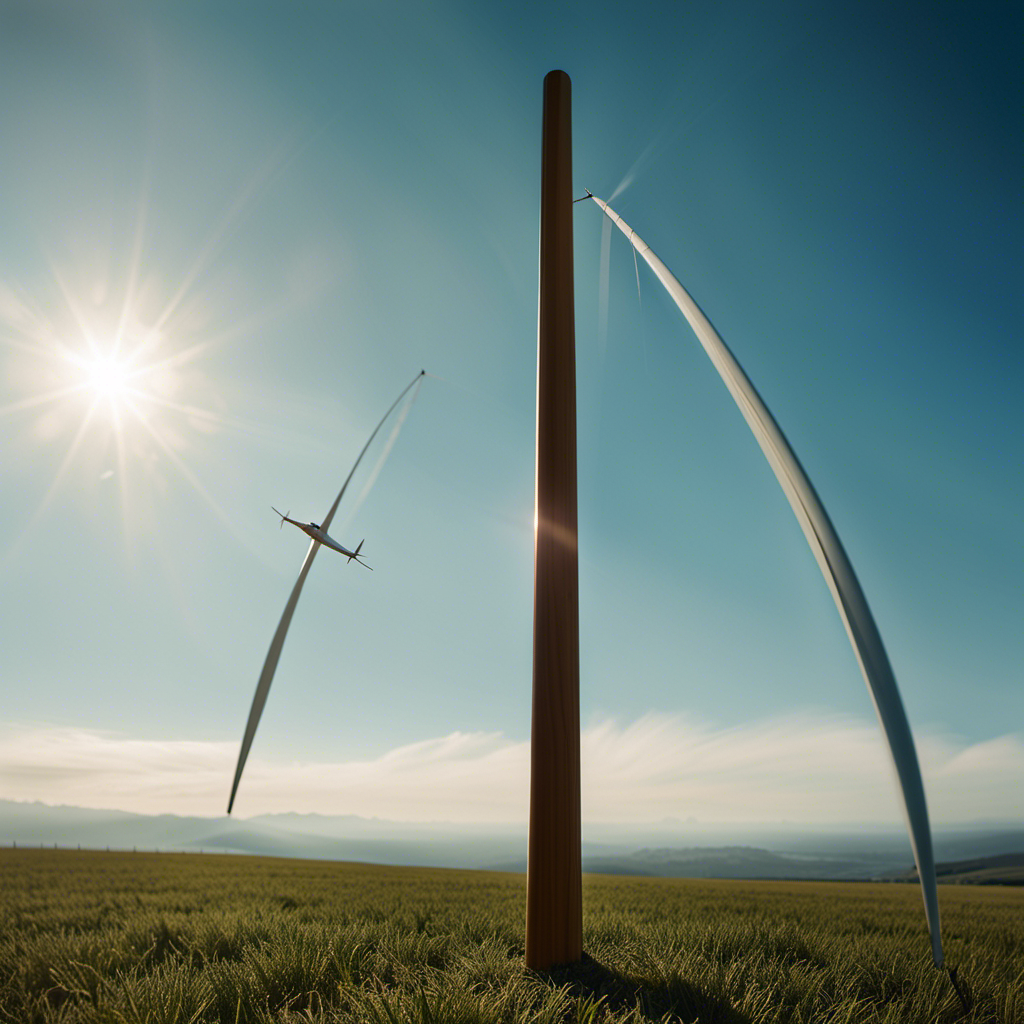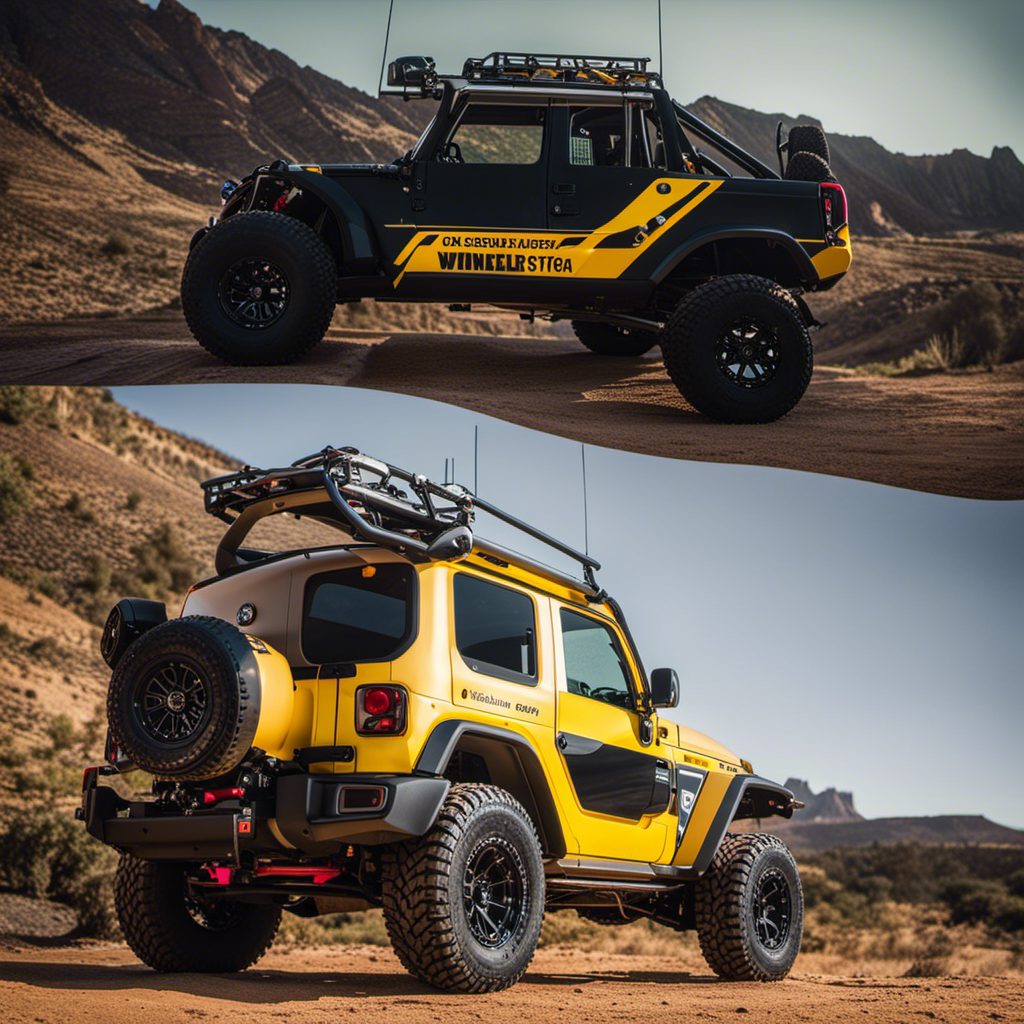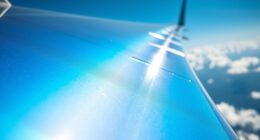As a seasoned glider pilot, I remember the excitement and anticipation that filled me during my first glider training session. The feeling of soaring through the air, relying solely on the wind for direction, was a completely novel sensation for me.
In this article, I will guide you through what to expect from your own first glider lesson. From pre-flight preparations to in-flight maneuvers, we’ll cover it all, ensuring that you feel confident and ready for this incredible adventure.
So, let’s dive in and discover the world of gliding together.
Key Takeaways
- Assess weather conditions and inspect the glider thoroughly before the flight
- Prioritize in-flight safety and be aware of emergency procedures and protocols
- Follow proper takeoff and landing procedures, considering factors like wind conditions
- Learn and practice gliding techniques and maneuvers, including turns, climbs, and thermaling
Pre-Flight Preparations
Before you hop into the glider, you’ll need to go through a quick pre-flight checklist. As an experienced glider pilot, I know the importance of ensuring that everything is in order before taking to the skies. The pre-flight checklist is a crucial step in ensuring a safe and successful flight.
The first item on the checklist is to assess the weather conditions. Weather considerations play a significant role in glider flying. It is essential to check the wind speed and direction, as well as any potential weather hazards such as storms or strong gusts. Clear skies with moderate winds are ideal for glider flying, as they provide stable and predictable conditions.
Once the weather has been assessed, it’s time to inspect the glider. This involves checking the control surfaces, such as the ailerons and rudder, to ensure they are functioning properly. Additionally, the pilot must inspect the canopy, ensuring it is securely fastened and free from any cracks or damage. A thorough inspection of the landing gear and wingtips is also necessary.
With the pre-flight checklist complete, it’s time to move on to getting familiar with the glider itself. This involves understanding the different controls and instruments, as well as learning about the glider’s performance capabilities. By familiarizing yourself with the glider, you’ll be better prepared for a smooth and enjoyable flight.
Getting Familiar with the Glider
During your first lesson, you’ll quickly become acquainted with the glider and its controls. As a seasoned glider pilot, I understand the importance of getting familiar with the equipment and controls before taking to the skies. Here’s what you can expect:
-
Glider Equipment: You’ll be introduced to the different components of the glider, including the wings, fuselage, and tail. You’ll learn about their functions and how they work together to provide lift and control.
-
Cockpit Controls: The instructor will explain the primary flight controls, such as the control stick, rudder pedals, and spoilers. You’ll learn how to manipulate these controls to maneuver the glider and maintain stability during flight.
-
Instrumentation: You’ll also be introduced to the various instruments in the cockpit, such as the altimeter, airspeed indicator, and variometer. These instruments provide crucial information about altitude, airspeed, and rate of climb or descent.
Takeoff and Landing Procedures
Now that you’re familiar with the glider controls, let’s discuss the takeoff and landing procedures.
As an experienced glider pilot, I can tell you that getting off the ground and back down safely are crucial aspects of every flight. When it comes to takeoff, there are a few techniques to keep in mind.
Firstly, it’s important to ensure that you have a suitable runway, free from obstacles and with enough length to gain sufficient speed. Once you’re ready to take off, smoothly apply full power and maintain a steady climb angle until you reach the desired altitude.
On the other hand, landing challenges can vary depending on factors such as wind conditions and the size of the landing area. The key to a successful landing is maintaining control and making precise adjustments. As you approach the landing area, you’ll need to reduce your speed gradually while keeping the glider aligned with the runway. It’s important to be aware of any crosswinds and make the necessary corrections to ensure a safe touchdown.
As we transition into the next section about the in-flight experience, it’s worth noting that mastering takeoff and landing procedures is just the beginning. Once you’re airborne, you’ll experience the true exhilaration of gliding and the freedom of soaring through the sky without an engine.
In-Flight Experience
As you glide through the air, the sensation of weightlessness and the breathtaking views will leave you in awe. It is important to prioritize in-flight safety during your gliding experience. Here are some key aspects to consider:
-
Properly Equipped: Before taking off, ensure that you are wearing all the necessary safety gear, including a properly fitted helmet, parachute, and harness. These items will provide essential protection throughout your flight.
-
Communication: Stay connected with your instructor through a two-way radio system. This allows for constant communication and guidance, ensuring a safe and enjoyable flight.
-
Weather Conditions: Be aware of the weather conditions and how they can impact your flight. Strong winds, turbulence, or other adverse conditions may require adjustments to your flight plan or even a rescheduling of your lesson.
-
Emergency Procedures: Familiarize yourself with the emergency procedures and protocols. Knowing how to respond in case of unexpected situations will help maintain safety during your flight.
Understanding these aspects of in-flight safety and gliding equipment will contribute to a successful and secure experience.
Now, let’s explore the exciting world of gliding techniques and maneuvers, where you will learn to control and maneuver the glider with precision and grace.
Gliding Techniques and Maneuvers
When it comes to gliding techniques and maneuvers, I’ve had the opportunity to experience a variety of them throughout my years of flying.
Basic maneuvers such as turns and climbs are essential skills that every glider pilot must master.
However, for those seeking a more adventurous and challenging flight, advanced techniques like thermaling and ridge soaring push the boundaries of what is possible in the air.
Basic maneuvers such as turns and climbs
You’ll learn basic maneuvers like turns and climbs during your first glider lesson. As an experienced glider pilot, I can assure you that mastering these maneuvers is crucial for building a strong foundation in glider flying. Here are four key aspects to consider when practicing these maneuvers:
-
Coordination: Maintaining proper coordination between the glider’s controls is essential for smooth and precise turns and climbs. You’ll learn to use the rudder, ailerons, and elevator simultaneously to achieve the desired outcome.
-
Bank Angle: Understanding and controlling the bank angle is fundamental. It determines the rate and radius of turns. You’ll learn to adjust the bank angle to adapt to different flight situations.
-
Climb Rate: Learning to control the glider’s climb rate is vital for efficient altitude gain. It involves using the correct airspeed, adjusting the pitch angle, and monitoring the glider’s performance using flight instruments like the variometer.
-
Entry and Exit: Mastering the entry and exit procedures for turns and climbs ensures smooth transitions and minimizes any adverse effects on the glider’s flight path.
Once you have a solid grasp of these basic maneuvers, you’ll be ready to explore advanced techniques like thermaling and ridge soaring seamlessly.
Advanced techniques like thermaling and ridge soaring
Mastering advanced techniques like thermaling and ridge soaring is essential for experienced glider pilots.
Thermaling techniques involve finding and utilizing thermal updrafts to gain altitude and extend flight time. As a pilot gains experience, they learn how to spot visual cues such as cumulus clouds, birds, or the movement of other gliders to locate these thermals. Once in a thermal, the pilot must use precise control inputs to maintain the glider in the rising air column.
Ridge soaring techniques, on the other hand, involve flying along the slopes of hills or mountains to take advantage of the upward wind that is deflected upwards by the terrain. Pilots must understand how the wind interacts with the ridge and make precise adjustments to stay within the lift zone.
Mastering these advanced techniques opens up a world of possibilities for glider pilots, allowing them to stay aloft for extended periods and explore vast distances.
However, before embarking on long cross-country flights, pilots must also understand airspace and navigation to ensure they can safely navigate through different airspaces and avoid restricted areas. This knowledge is crucial for a pilot’s safety and the smooth flow of air traffic.
Understanding Airspace and Navigation
Before taking off on your first glider lesson, make sure you understand the basics of airspace and navigation. As a glider pilot, it’s crucial to have a solid understanding of air traffic and your responsibilities in the sky.
Airspace is divided into different classes, each with its own set of rules and regulations. It’s important to know which airspace you will be operating in and what restrictions apply. Familiarize yourself with the necessary charts and maps to properly navigate through the airspace.
Additionally, understanding air traffic patterns and communication protocols is essential for a safe and efficient flight. As a pilot, you have the responsibility to maintain situational awareness and communicate effectively with other pilots and air traffic control. Always be aware of your position and maintain proper separation from other aircraft.
By being knowledgeable about airspace and fulfilling your pilot responsibilities, you can ensure a smooth and controlled flight.
Now that you have a good understanding of airspace and navigation, it’s time to delve into safety and emergency procedures.
Safety and Emergency Procedures
Now that you understand airspace and navigation, it’s important to be familiar with safety and emergency procedures. As a seasoned glider pilot, I can assure you that having a thorough understanding of these procedures is crucial for a successful and safe flight.
Here are three key safety and emergency procedures to keep in mind:
-
Emergency Landing: In the event of an emergency, it’s important to know how to safely land the glider. This includes identifying suitable landing areas, such as open fields or airports, and executing a controlled descent. Practice emergency landing techniques during your training to ensure you are prepared for any unexpected situations.
-
Safety Equipment: Prior to taking off, always ensure that you are equipped with the necessary safety gear. This includes wearing a properly fitted parachute, utilizing a safety harness, and securing any loose items in the cockpit. Additionally, familiarize yourself with the location and operation of emergency equipment, such as fire extinguishers and first aid kits.
-
Communication: Effective communication is essential for maintaining safety in the air. Learn and adhere to the standard radio procedures, including proper phraseology and frequency usage. In case of emergencies, knowing how to communicate distress signals or request assistance is vital.
Now that you are well-versed in safety and emergency procedures, it’s time to transition into the next section where we can focus on enjoying the scenic views and the pure exhilaration of gliding through the sky.
Enjoying the Scenic Views
As an experienced glider pilot, I’ve had the privilege of taking in the breathtaking landscapes from the cockpit of a glider. The sensation of soaring through the air, with nothing but the vast expanse of nature stretching out below you, is truly awe-inspiring.
From this vantage point, you can easily spot landmarks and points of interest. Whether it’s a distant mountain range, a shimmering lake, or a historical monument, it adds an extra layer of excitement to your flight.
Taking in the breathtaking landscapes from a glider
Imagine soaring through the sky in a glider, taking in the breathtaking landscapes below you. As a glider pilot, I’ve had the privilege of experiencing the most stunning scenic views from the air.
Here is what you can expect when you embark on your first glider lesson:
- Vast expanses of rolling hills and lush green fields stretching out as far as the eye can see.
- Majestic mountain ranges, their peaks covered in a blanket of snow, standing tall against the horizon.
- Glistening lakes and winding rivers, reflecting the sunlight and creating picturesque scenes.
- Quaint towns and charming villages nestled amongst the countryside, adding a touch of civilization to the natural beauty.
From these heights, you can spot landmarks and points of interest with ease, effortlessly navigating the terrain below.
Transitioning into the next section, let’s explore the art of spotting these remarkable features from the air.
Spotting landmarks and points of interest from the air
From the heights of the glider, you’ll easily spot landmarks and points of interest, effortlessly navigating the terrain below. As an experienced glider pilot, I can assure you that spotting wildlife and capturing aerial photographs are some of the most thrilling aspects of flying.
With a keen eye, you can observe the graceful movements of birds in flight or the majestic herds of animals roaming the land. The glider’s vantage point allows for unparalleled views, giving you the opportunity to document these encounters through your camera lens.
As you glide through the skies, you’ll be amazed at the beauty that unfolds before you. But the excitement doesn’t end there. Once you touch down, it’s time for the post-flight debriefing, where we’ll discuss your experience, answer any questions, and plan for future adventures in the skies.
Post-Flight Debriefing
During the post-flight debriefing, the instructor will provide feedback and discuss areas for improvement. This analysis is an essential part of improving your flight skills as a glider pilot. The debriefing session allows for a detailed review of the flight, highlighting both the successes and areas that need improvement.
The post-flight analysis begins with a comprehensive examination of the flight plan and execution. The instructor will assess your decision-making process, navigation skills, and ability to adapt to changing conditions. They will provide valuable insights into your performance, helping you understand where you excelled and where you can make adjustments.
Additionally, the debriefing will focus on specific maneuvers and techniques employed during the flight. The instructor will offer guidance on how to refine your flying skills, providing tips and tricks to enhance your performance. They may also suggest additional training exercises or recommend specific areas to focus on for future flights.
By participating actively in the debriefing process, you can gain a deeper understanding of your strengths and weaknesses as a glider pilot. This knowledge will serve as a solid foundation for continued growth and improvement in your gliding journey.
Transitioning into the next section, continuing your gliding journey, it is important to apply the feedback received during the post-flight debriefing to future flights.
Continuing Your Gliding Journey
As someone who is passionate about gliding and eager to continue their journey in this exhilarating sport, there are several options available for further training and certification.
One can choose to pursue advanced training courses that focus on specific areas of gliding, such as cross-country flying or aerobatics.
Additionally, joining gliding clubs provides a wonderful opportunity to connect with fellow glider pilots, share experiences, and gain valuable knowledge from seasoned aviators.
Furthermore, participating in gliding competitions and events not only allows for personal growth and skill development, but it also offers a chance to showcase one’s abilities and compete against other glider pilots on a regional or even national level.
Options for further training and certification
If you want to continue your glider training and get certified, you can explore different options available. Here are some further training opportunities and the certification process to consider:
-
Advanced Glider Training: Enhance your skills and knowledge by taking advanced training courses. These courses focus on advanced maneuvers, navigation techniques, and emergency procedures, preparing you for more challenging flying experiences.
-
Cross-Country Endorsement: Gain the skills and confidence to fly long distances by obtaining a cross-country endorsement. This endorsement allows you to plan and execute cross-country flights, expanding your horizons as a glider pilot.
-
Instructor Certification: If you have a passion for teaching and sharing your love for gliding, you can pursue instructor certification. This process involves comprehensive training and evaluation to become a certified gliding instructor.
-
Aerobatic Training: If you crave an adrenaline rush, consider aerobatic training. Learn how to perform thrilling aerobatic maneuvers safely under the guidance of experienced instructors.
By furthering your training and obtaining certifications, you can unlock new opportunities in the world of gliding.
Now, let’s delve into the exciting world of joining gliding clubs and participating in competitions and events.
Joining gliding clubs and participating in competitions and events
Joining gliding clubs and participating in competitions and events can provide opportunities for pilots to connect with other enthusiasts and showcase their skills. It is an exciting way to further enhance your gliding experience and immerse yourself in the gliding community. Competitions allow pilots to test their abilities against others and push their limits to achieve better results. Gliding events, on the other hand, offer a chance for pilots to gather and share their passion for flying. It is a great platform to learn from experienced pilots, exchange knowledge, and build lasting friendships. Below is a table showcasing some popular gliding competitions and events:
| Competition/Event | Location | Date | Description |
|---|---|---|---|
| National Gliding Championships | XYZ | July 2022 | The premier gliding competition where pilots compete for national recognition and prizes. |
| International Glider Expo | ABC | September 2022 | A global gathering of glider enthusiasts showcasing the latest advancements in gliding technology. |
| Regional Gliding Competition | DEF | May 2022 | A friendly competition among gliding clubs in the region, promoting camaraderie and skill development. |
| GliderFest | PQR | August 2022 | A fun-filled event featuring glider demonstrations, workshops, and social activities for all participants. |
Participating in these competitions and events not only lets you improve your flying skills but also allows you to connect with like-minded individuals who share your love for gliding.
Frequently Asked Questions
How much does a glider lesson typically cost?
The cost of a glider lesson can vary depending on factors such as location, duration, and instructor fees. It’s important to consider these factors when budgeting for your first lesson.
Are there any age or weight restrictions for participating in a glider lesson?
Age and weight restrictions apply to glider lessons. The minimum age varies, but typically participants must be at least 14 years old. Weight restrictions also depend on the glider’s specifications, ensuring safety and proper operation.
Are there any medical conditions or physical limitations that would prevent someone from participating in a glider lesson?
Some medical conditions and physical limitations may prevent individuals from participating in a glider lesson. It is important to consult with a doctor and the glider instructor to ensure safety and suitability for the activity.
Can I bring a friend or family member along to watch during my glider lesson?
Sure, you can bring your loved ones to witness the magic of gliding. However, please ensure they adhere to glider safety precautions. Children must be supervised at all times to maintain a secure environment.
Is it possible to get a pilot’s license specifically for gliders?
Yes, it is possible to obtain a pilot’s license specifically for gliders. Glider pilots must adhere to specific regulations set by aviation authorities to ensure safety and proficiency in operating glider aircraft.
Conclusion
As I stepped out of the glider and onto solid ground, a sense of accomplishment washed over me.
The gliding lesson had taught me more than just how to maneuver the aircraft; it had reminded me of the freedom and beauty that can be found in the skies.
The glider became a symbol of possibility and exploration, and I knew that this was just the beginning of my journey into the world of gliding.
With each flight, I would continue to learn, grow, and experience the thrill of soaring through the air.
